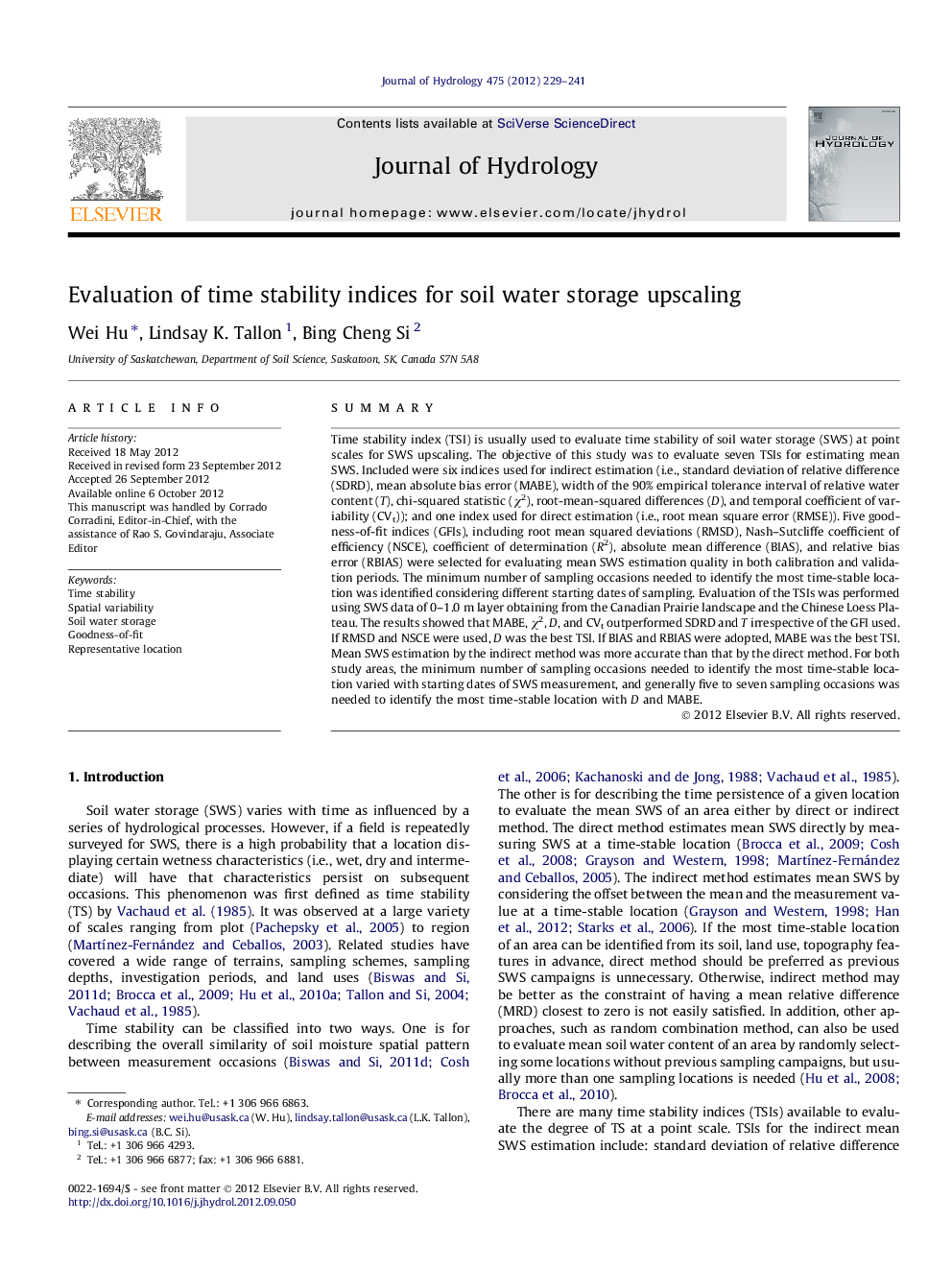| کد مقاله | کد نشریه | سال انتشار | مقاله انگلیسی | نسخه تمام متن |
|---|---|---|---|---|
| 4576657 | 1629973 | 2012 | 13 صفحه PDF | دانلود رایگان |

SummaryTime stability index (TSI) is usually used to evaluate time stability of soil water storage (SWS) at point scales for SWS upscaling. The objective of this study was to evaluate seven TSIs for estimating mean SWS. Included were six indices used for indirect estimation (i.e., standard deviation of relative difference (SDRD), mean absolute bias error (MABE), width of the 90% empirical tolerance interval of relative water content (T), chi-squared statistic (χ2), root-mean-squared differences (D), and temporal coefficient of variability (CVt)); and one index used for direct estimation (i.e., root mean square error (RMSE)). Five goodness-of-fit indices (GFIs), including root mean squared deviations (RMSD), Nash–Sutcliffe coefficient of efficiency (NSCE), coefficient of determination (R2), absolute mean difference (BIAS), and relative bias error (RBIAS) were selected for evaluating mean SWS estimation quality in both calibration and validation periods. The minimum number of sampling occasions needed to identify the most time-stable location was identified considering different starting dates of sampling. Evaluation of the TSIs was performed using SWS data of 0–1.0 m layer obtaining from the Canadian Prairie landscape and the Chinese Loess Plateau. The results showed that MABE, χ2, D, and CVt outperformed SDRD and T irrespective of the GFI used. If RMSD and NSCE were used, D was the best TSI. If BIAS and RBIAS were adopted, MABE was the best TSI. Mean SWS estimation by the indirect method was more accurate than that by the direct method. For both study areas, the minimum number of sampling occasions needed to identify the most time-stable location varied with starting dates of SWS measurement, and generally five to seven sampling occasions was needed to identify the most time-stable location with D and MABE.
► Seven time stability indices were reviewed and evaluated.
► D and MABE were the best time stability indices.
► Indirect method is better than direct method for mean soil water estimation.
Journal: Journal of Hydrology - Volume 475, 19 December 2012, Pages 229–241